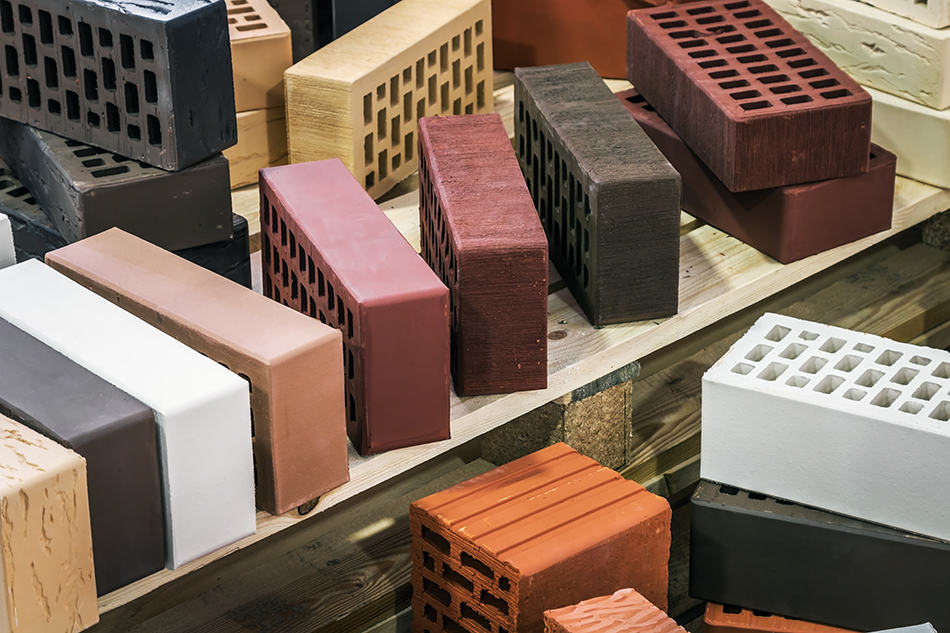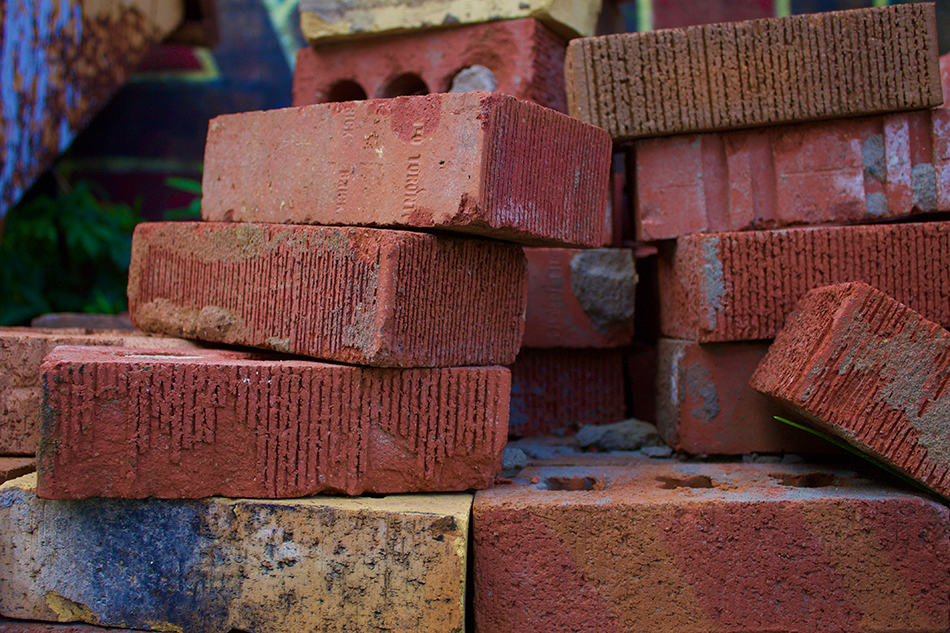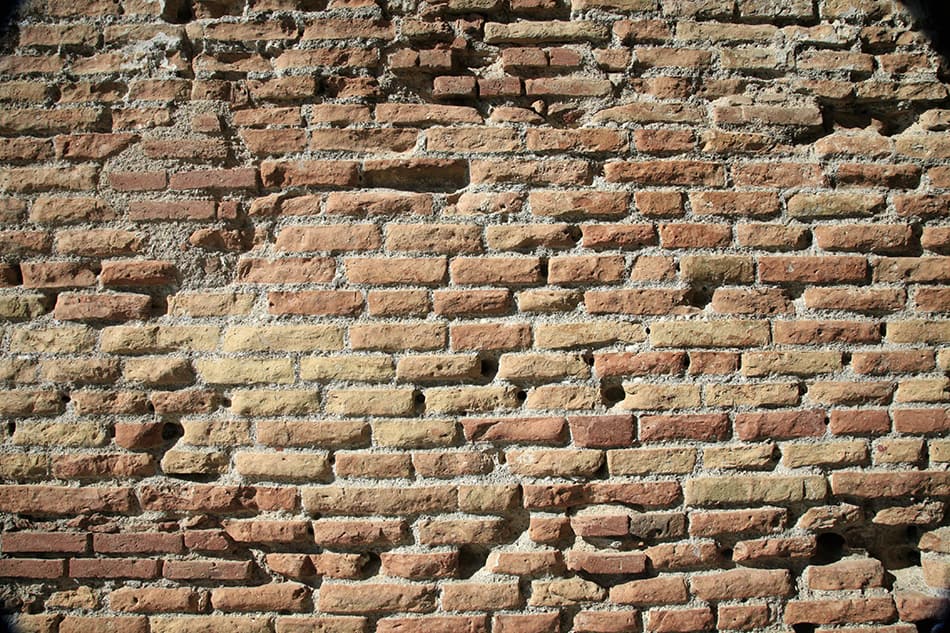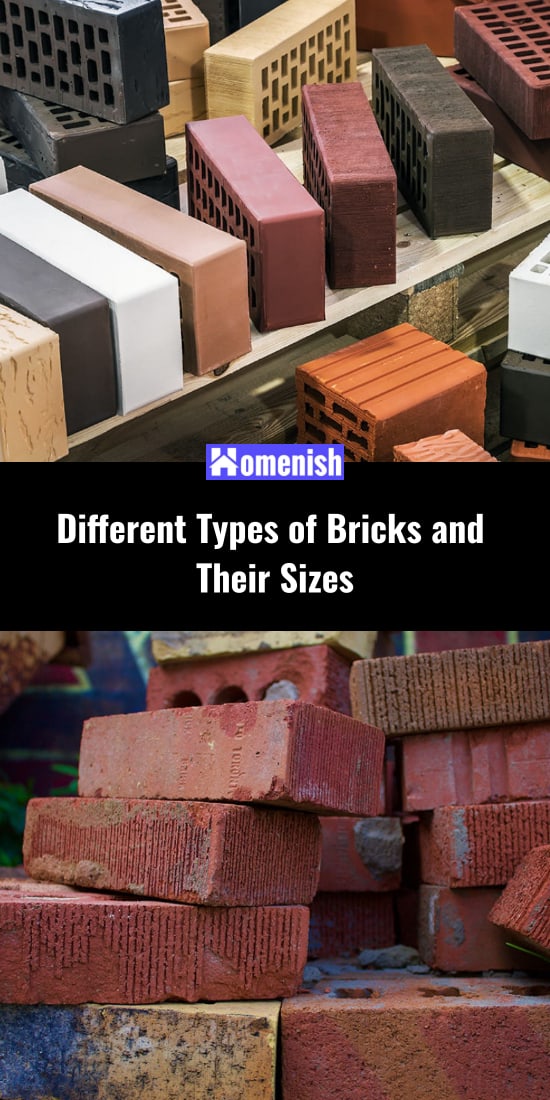If you’re in the masonry or construction industry, then you’ll already be aware that there are many different types of bricks, with these coming in a wide variety of different sizes. This is because different types of buildings and structures require different styles, both in terms of function but also in terms of aesthetics. If you’re looking to learn more about the many types of bricks available and their sizes, then this is the guide for you.
Modular Brick Types and Sizes
Modular bricks are commonly used in new constructions and in renovations of residential buildings, as well as industrial properties. They have predictable sizes that slot together easily to make the construction process simple. Modular brick measurements are given as nominal measurements that refer to not only the physical dimension of the brick itself but also the measurements of the surrounding recommended level of mortar once the brick is in place.
| Modular Brick Types | Modular Brick Sizes |
|---|---|
| Modular | 2 ⅔ in. x 8 in. x 4 in |
| Closure Modular | 3 ⅕ in. x 8 in. x 4 in |
| Engineer Modular | 8 in. x 4 in. x 4 in |
| Norman | 2 ⅔ in. x 12 in. x 4 in |
| Engineer Norman | 3 ⅕ in x 12 in. x 4 in |
| Roman | 2 in. x 12 in. x 4 in |
| Utility | 4 in. x 12 in. x 4 in. |
| Meridian | 4 in. x 16 in. x 4 in. |
| Double Meridian | 8 in. x 16 in. x 4 in. |
| Double Through Wall Meridian | 8 in. x 16 in. x 8 in. |
Here are the detailed types of modular bricks.
Modular
This brick has a nominal measurement of 2 ⅔ in. x 8 in. x 4 in. These bricks will have flat, straight edges and two or three hollow holes drilled right through the center of them.
Closure Modular
These bricks are accordingly named because they are used on corners and edging of brickwork, therefore bringing the bricks to a close. They have a nominal measurement of 3 ⅕ in. x 8 in. x 4 in. They have more holes drilled through their middle than standard modular bricks, usually eight or ten. This gives them more space for the mortar to grab onto, making brickwork completed in these bricks stronger.
Engineer Modular
Engineered modular bricks measure 8 in. x 4 in. x 4 in. They can easily be distinguished from regular modular bricks because the holes in them are rectangular rather than circular. This difference in the shape of holes makes them easier to manufacture, as they can cool more quickly. It also makes them more lightweight so that they are less expensive to ship and easier to handle during the construction process. Their slightly larger size lends them well to use in residential home building, allowing projects to complete more quickly.
Norman
These bricks are so-called because they were first used by the Normans during the 10th century. They have a nominal measurement of 2 ⅔ in. x 12 in. x 4 in., and a shallow rectangular shape. These bricks have several rectangular holes molded into them for good mortar grip.
Engineer Norman
This brick is an improved version of the original Norman brick and has nominal measurements of 3 ⅕ in x 12 in. x 4 in. It is exactly like the Norman brick but has a taller shape, giving the bricklayer more brick to work with and aiding in faster brick building. Like the standard Norman bricks, the engineered Norman bricks have several rectangular holes slotted through them.
Roman
Like Norman bricks, Roman bricks are named after the first people they were used by. They are shallow, with a slender look to them. The face of these bricks is smooth and free from dimples or markings, giving them a pristine finish. Roman bricks do not have any holes or slits running through the center of them; therefore, they are not as strong as some other types of modular bricks. These bricks are most commonly used in instances where aesthetics are regarded as more important than the integrity of the brickwork, such as in column work, surrounding walls around a property, or the fronts of buildings. These bricks have a nominal dimension of 2 in. x 12 in. x 4 in.
Utility
The utility brick has many similarities to the standard modular brick; it has smooth sides and circular holes drilled through the center. The key difference is the size. Utility bricks have a nominal measurement of 4 in. x 12 in. x 4 in. This measurement makes them particularly useful for matching the alignment of standard-sized windows and doors, which can add a pleasing symmetrical and uniform feel to the exterior of buildings.
Meridian
The meridian brick is exactly the same as the utility brick, except that it has a longer length. This brick has a nominal measurement of 4 in. x 16 in. x 4 in., making it four inches longer than the utility brick. This added length can increase the stability of building work and allow for more flexibility in terms of patterning.
Double Meridian
As you might expect from the name, this brick is double the size of the standard meridian brick. The added size comes in height rather than length, essentially taking up the same space with a single brick as if two standard meridian bricks were laid on top of one another. The nominal size of the double meridian brick is 8 in. x 16 in. x 4 in. This brick is useful when a larger brick is needed in certain types of construction, and it is manufactured by one of the biggest brick suppliers in North America. The holes in this brick are neither circular nor slotted but instead take the shape of deep squares that give the brick an almost hollow feel. This means that they are fairly lightweight despite their large size and have plenty of space for the mortar to grip onto.
Double Through Wall Meridian
This is the largest of all meridian bricks, coming in at a nominal measurement of 8 in. x 16 in. x 8 in. It is a sturdy yet almost entirely hollow brick, making it easy to handle, stable, and strong. Due to their size, these bricks make a construction project go up quickly.
Non-Modular Brick Types and Sizes
Non-modular bricks are not measured in nominal measurements like modular bricks, but instead, their measurements refer to the bricks’ specific physical dimensions. These bricks are of non-standard sizes that will not fit easily into patterns for standard doors and window frames. Instead, they are used in less conventional builds that may have unusual sizes.
| Non-Modular Brick Types | Non-Modular Brick Sizes |
|---|---|
| Standard | 2 ¼ in. x 8 in. x 3 ½-to-3 ⅝ in |
| Engineer Standard | 2 ¾-2 13/16 in. x 8 in. x 3 ½-3 ⅝ in. |
| Closure Standard | 3 ½-to-3 ⅝ in. x 8 in. x 3 ½-to-3 ⅝ in |
| Queen | 2 ¾ in. x 7 ⅝-to-8 in. x 2 ¾-to-3 in. |
| King | 2 ⅝-to-2 ¾ in. x 9 ⅝-to-9 ¾ in. x 2 ¾-to-3 in |
Standard
This classic non-modular brick has specified dimensions of 2 ¼ in. x 8 in. x 3 ½-to-3 ⅝ in. It is a solid brick without cores drilled through the center, but instead, it has a divot in the top and base of the brick, which is known as a ‘frog.’ This design feature works in the same way as cores, giving some space for that the mortar can spread and grip onto.
Engineer Standard
This brick is approximately the same length and width as the standard non-modular brick, but it is higher than. Dimensions are measured at 2 ¾-2 13/16 in. x 8 in. x 3 ½-3 ⅝ in. Engineer standard bricks have cores through the center. These cores usually take the shape of five rectangles in a row, allowing space for the mortar to grip and thereby making any brickwork stronger.
Closure Standard
These bricks are very similar to the closure modular bricks and are also intended for use on the edges of brickwork. They have many cores drilled through their centers in order to make the edge of structures more solid. They have a similar size to closure modular bricks, with specified measurements of 3 ½-to-3 ⅝ in. x 8 in. x 3 ½-to-3 ⅝ in.
Queen
This brick has specified measurements of approximately 2 ¾ in. x 7 ⅝-to-8 in. x 2 ¾-to-3 in., though this can vary a little between manufacturers. These chunky looking bricks have large square cores, usually four, to allow mortar to flow through.
King
It will be no surprise to learn that the king brick is bigger than the queen brick, with specified measurements of 2 ⅝-to-2 ¾ in. x 9 ⅝-to-9 ¾ in. x 2 ¾-to-3 in. This is a very substantial brick that can give an imposing look to brickwork. It has additional square cores compared with the queen brick and is known to be very sturdy and strong.
Oversized Bricks
As you may guess from the name, these bricks are larger than the bricks you would typically find used for residential buildings, and they also go by the name of ‘8-Square bricks’. These bricks are generally not very long, but they have a much greater height than standard bricks. They are ideal for use in building schools, care homes, offices, hospitals, and government buildings. Their increased height means that building walls will be a much quicker process, and it also means that very tall structures can be built while maintaining structural strength and integrity.
These bricks typically have three or more circular cores drilled through them, the entire way through, to ensure that mortar can spread and grip to deep within the brick, improving hold. There are six different types of oversized bricks. These are the 8SQ and the 8SQ1 that are virtually identical in size and looks, with the exception of one feature; the 8SQ1 has a scored vertical line all the way down the center of the brick, whereas the 8SQ is completely smooth. These bricks both have specified measurements of 7 ⅝ in. x 7 ⅝ in. x 3 ⅝ in. The remainder of the oversized bricks has unusual shapes that are good for using to build borders or in creating angular walls.
Radial Bricks
Internal
Internal radial bricks are used to create a curved interior wall while still giving the impression of a standard straight wall on the exterior of a building. Accordingly, these bricks are flat on one size, with an inward arching curve on the opposite side.
External
External radial bricks are used to create anything from a gentle arch to a completely round wall of brickwork, for example, to create a wishing well. These bricks come in a range of different sizes to meet the needs of your curved building project.
Sill Bricks
Sill bricks are most commonly used underneath window frames and door frames, both for aesthetic appeal but also to encourage water runoff to be directed away from the property. Sill bricks come in a range of styles and sizes to suit the specific building project. These can range from angular, utilitarian sill bricks to more decorative sill bricks.
Coping Bricks
Coping bricks are used on the top of masonry work, both to finish off the look aesthetically, but also to ensure the longevity of the brickwork. Coping bricks are completely solid, and therefore are important in preventing moisture from penetrating through the brickwork. They are also curved at varying angles to help direct water away and prevent pooling from occurring on top of the bricks. Coping bricks also have a very decorative quality about them and can be used to make brickwork look complete.
Lipped Bricks
These bricks are manufactured with a hollow frog design on their underside, creating a space for the mortar to spread into and grip on to. The top of the brick, meanwhile, is smooth and solid. This makes these bricks ideal for using on a top row of brickwork, as their underneath can grip the bricks below, while the top of the brick is smooth and prevents water from seeping into the lower bricks.
Flat Arch Bricks
These bricks are wedge-shaped or parallelogram-shaped, and they are completely solid. These bricks are typically used on the border of a wall for decorative purposes or at the base of a wall as an interesting edging. They are also commonly used in masonry arches or along brick paths. These bricks cannot be used to create entire walls, owing to their unusual shape and also their lack of cores.
Tread Bricks
These bricks are shallow, flat bricks with rounded front edges. These are used predominantly in building external steps and stairways. The curved edge of the brick gives an aesthetically pleasing look to a set of stairs and also makes them more comfortable to sit or rest on. Curved edges will also cause much less harm to the user if they accidentally trip down the stairs or catch their foot on one of the lips. The lack of harshly angled edges makes for a more streamlined look.
Corner Bricks
Standard modular and non-modular bricks are usually well suited to creating corners on walls and buildings, but these special corner bricks come in handy if the angle you want to create is non-standard. They offer flexibility in building, making it possible to create unusual building shapes. They can be used alongside regular bricks.
Brick Orientation Types
The way a brick is placed will affect both the aesthetics of a build, but also its structural integrity. There are six main ways that standard bricks can be laid. These are:
Sailor
This brick orientation sees the brick standing on its smallest face, with the largest part of the brick facing forwards. Aesthetically this will give a vertical flat-faced line of bricks, but structurally is not the best option for a long-lasting wall. Laying bricks in this orientation is generally used as a decorative touch, and you would not build an entire wall or building with bricks laid like this. Sailor oriented bricks will need support from behind to maintain integrity.
Soldier
This brick orientation is easy to remember because it looks as though the brick is standing to attention like a soldier. The brick is standing on its end, like the sailor orientation, but it has the slim side facing the front rather than the wide side. As with the sailor style of brick-laying, the soldier orientation is primarily used for decorative purposes, for example, around a doorway, and will need to be supported by nearby bricks to ensure structural integrity.
Stretcher
This is the standard way bricks are laid for quick construction and optimum strength of build. This is known as ‘stretcher’ orientation because the bricks give the effect of being stretched sideways to create a solid wall.
Header
Header brick-laying sees the smallest part of the brick pointing outwards while the brick is lying flat, giving the impression from the exterior of lots of tiny bricks. However, the opposite is true, and this type of brick orientation results in having an exceptionally chunky, solid wall. Laying bricks in this way produces a very strong wall, but it would take a long time to complete. It is rare to see entire walls built like this and instead is used as a decorative way to lay bricks on wall edges.
Rowlock
This type of brick-laying is much like the header, but the brick appears to be laying on its side with the smallest surface pointing outwards. This brick orientation can be used for decorative purposes, but it also provides strength that other rows of bricks can be laid on top of; hence the name ‘rowlock.’
Rowlock Stretcher
The rowlock stretcher is a cross between the rowlock orientation and the stretcher orientation. This style sees the brick laid with a long edge being forward-facing, but the largest surface of the brick is external rather than this being the surface it is laid on. Laying bricks in this way can see a wall quickly gaining progress, but it will not be as structurally strong as a traditional stretcher wall because the wall itself will be much thinner, and therefore should have supporting brickwork behind it.









